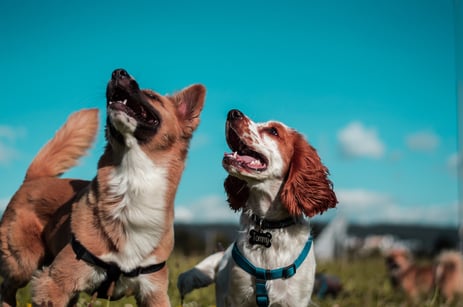The Dos And Don’ts Of Pet Air Travel
Published on: June 23, 2022 | Author: Starwood Pet Travel

Hundreds of thousands of animals travel by air each year, to and from locations all around the world. The incidence of problems is extremely low. Nonetheless, pet air travel isn’t necessarily a simple procedure. If your pet is about to take to the skies, there are some dos and don’ts you should follow.
DON'T - make any assumptions.
Every airline has its own rules for pet travel, and every country has its own pet health requirements. Dogs and cats without the proper documentation – all of it – may not be allowed on board and will almost certainly face customs issues, quarantine or other consequences when they arrive. This is the last thing you or your pet need.
DON'T - sedate your pet.
Any pet that is flying should not be sedated unless it would be more detrimental to the pet than without it. The American Veterinary Medical Association strongly recommends against it, and reputable pet shipping companies will not accept pets that have been sedated. Additionally, many airlines have a no-sedation policy and will reject any pet who appears to be sedated. That may seem counter-intuitive – after all, you want your four-legged friend to be as relaxed as possible under stressful conditions.
But the fact is, sedation puts your dog or cat at a significant disadvantage. Their mind is fuzzy, making them more confused and fearful, not less. And they have reduced muscle control, so they cannot move around easily or maintain their balance. Not only that, but it can cause cardiac or respiratory issues when they are up in the air at high altitudes. Your cat or dog will be far better off if you take other steps to prepare them for their flying experience.
DO - your research.
Read airline information, country pet import guidelines, pet travel blogs, comments and testimonials from pet parents who’ve been there. Recognize that not everything you read will be accurate or up to date, but the more perspectives you get the better you will understand what’s involved with pet air travel. You also want to make sure you do find the correct information to make sure your pet is complying with your destination's animal import regulations.
Depending on your pet’s point of departure and arrival, you may have multiple options regarding how they travel, or you may have little to none. If your pet has a snub nose – pugs, boxers, etc. and some cats – that will limit your options. If you have a large dog, their size may also limit the options.
DO - talk to your vet right away.
Making sure your pet meets all the health requirements and obtaining all the proper paperwork can take weeks or even months, depending on your destination. You can’t afford to miss the timing deadlines, and of course you want to be sure your pet is healthy to fly.
DO - work with a professional pet transport company.
There are two very important reasons to consider using a professional pet transport service:
- Arranging pet air travel is their only business. They are your most reliable source for accurate, up-to-date information. And thanks to their extensive experience you can get tips and advice you won’t find elsewhere to make your pet’s journey as smooth as possible. Besides, some airlines and countries require you to use a professional shipper.
- They have your back. As you’ll learn as you study up on pet air travel, there are many variables at play, some of which you cannot control. Whether you’re traveling with your pet or you’re waiting on the ground for your pet to complete their journey, once the process is underway you cannot always be present to step in if needed.
What if the flight is delayed or the weather changes at the last minute and they can’t fly as planned? Your pet shipper is used to dealing with issues like this, and they’re also adept at finding solutions or making a plan to avoid some problems.
DO - get your pet acclimated to the travel kennel.
This is one of the most important things you can to do reduce the potential stress as your pet flies. Even if your dog is crate-trained, chances are they'll need a different kennel for air travel – one that meets IATA standards. Your pet will be much less anxious riding in a kennel they recognize as their safe space than in something that's brand new to them.
DO - talk to your tax advisor.
Perhaps that sounds strange, but if your pet will be flying because you’re moving, their travel-related expenses might be tax-deductible along with your other moving expenses. So ask about this before you make any decisions about how to handle your beloved pet’s move.
Starwood Animal Transport has rebranded to Starwood Pet Travel. We are still the same great company with the best team, just now with a slightly different name.
Subscribe to the Blog
Enjoy our content? Get them sent to your inbox!
Subscribe Now!


